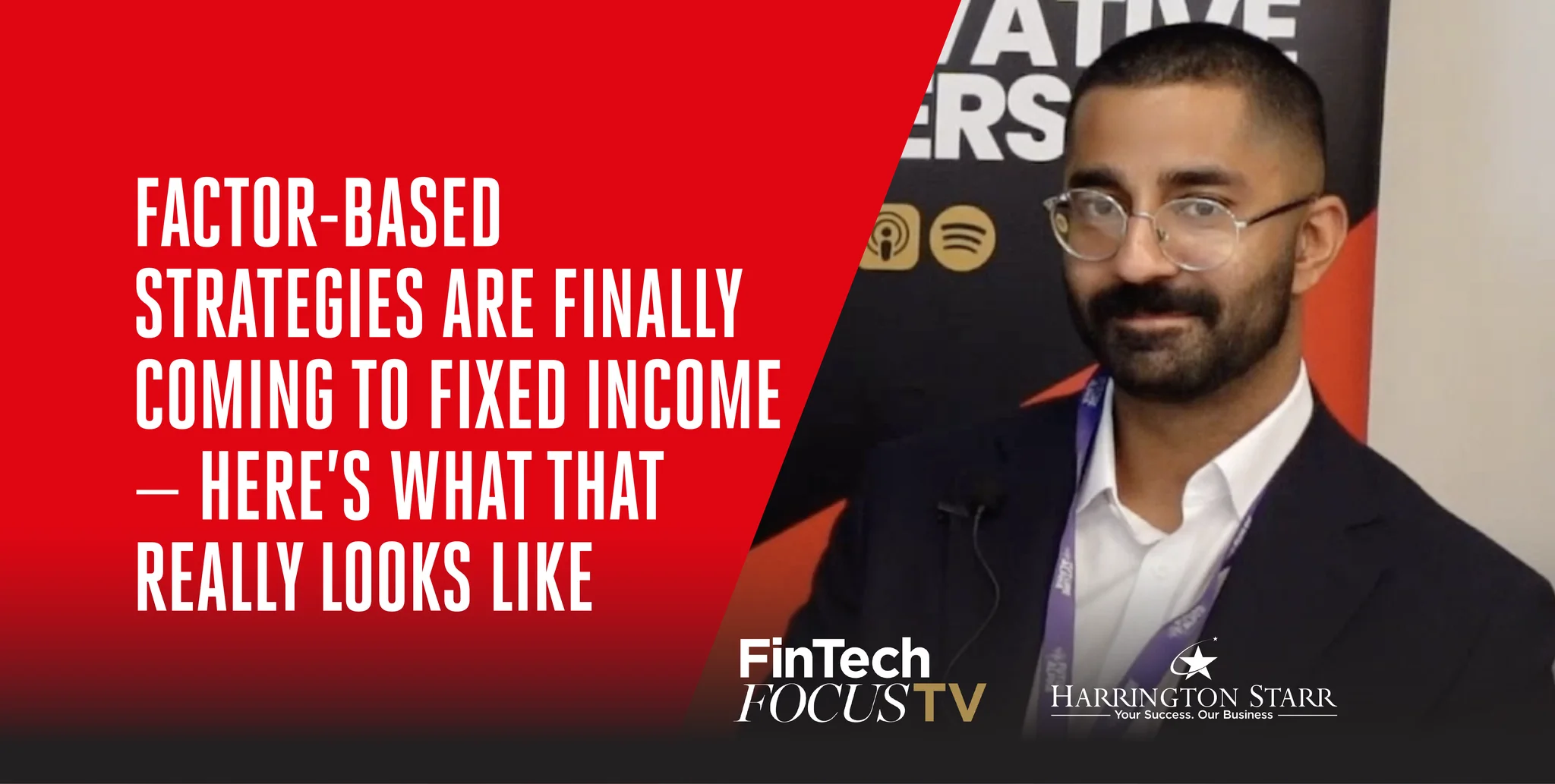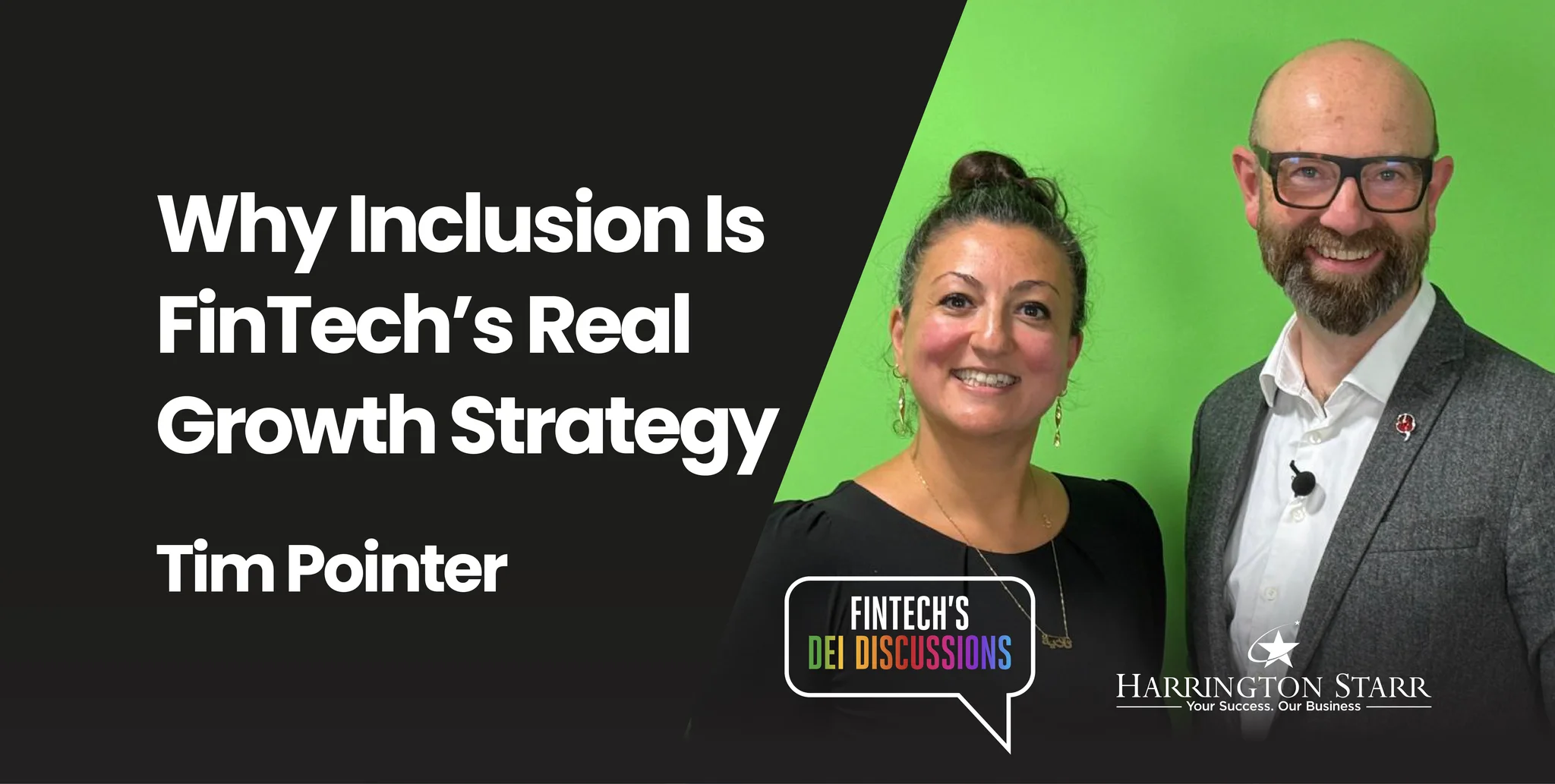Why Commercial Cohesion Drives Revenue, Retention, and Results in FinTech 2025
In Financial Tech, growth doesn’t just come from innovation, it comes from execution. And nothing slows down execution faster than misalignment between Sales and Marketing.
Too often, these two critical functions operate in silos. Sales complains about poor leads. Marketing says sales aren’t following up. Meanwhile, the pipeline slows, customer acquisition costs rise, and conversion rates stagnate.
At Harrington Starr, we work with FinTech firms across London and New York that are scaling fast, and we’ve seen firsthand how companies that align Sales and Marketing win bigger, faster and more sustainably.
This playbook explores how C-level leaders can fix the disconnect, structure their go-to-market (GTM) strategy for success, and hire the right people to drive true commercial cohesion.
Why Sales and Marketing Misalignment Hurts FinTech Growth
In a space as fast-paced and competitive as FinTech, misalignment between Sales and Marketing isn’t just inconvenient, it’s expensive.
The symptoms include:
- Low-quality leads and high bounce rates
- Conflicting messaging across channels and sales conversations
- Slow-moving pipeline and low conversion from MQL to SQL
- Poor customer experience from inconsistent narratives
- Lost revenue opportunities and longer sales cycles
As funding tightens and efficiency becomes the new growth metric, aligning Sales and Marketing isn’t a nice-to-have, it’s a must-have for FinTech businesses looking to scale.
The Commercial Cost of Silence Between Financial Technology Marketing and Sales Teams
In many of the companies we work with across New York and London, Sales and Marketing are still reporting into different leaders, working on different goals and measured on different KPIs.
The result? Leads fall through the cracks. Campaigns miss the mark. Sales doesn’t get the enablement content it needs. Marketing doesn’t get the feedback loops it craves.
CROs and CMOs must act as partners, not competitors. Without joint ownership of revenue, churn and customer engagement, neither team can thrive.
The FinTech Business C-Suite’s Role in Sales and Marketing Alignment
Alignment starts at the top. It’s the CEO, CRO, and CMO’s responsibility to set a unified direction, define what success looks like, and remove structural blockers.
1. Create Shared KPIs
Sales and Marketing teams in FinTech should be held accountable to shared goals like:
- Pipeline coverage
- Conversion rates (MQL to SQL to closed-won)
- Customer acquisition cost (CAC)
- Customer lifetime value (CLTV)
- Revenue attribution from marketing activity
When both teams succeed or fail together, collaboration becomes the norm, not the exception.
2. Co-Own the Customer Journey
Sales doesn’t just "close" customers anymore. Marketing doesn’t just "generate awareness." Together, they own every stage of the buyer journey, from first click to renewal and upsell.
In FinTech, where buying cycles are complex and involve multiple stakeholders, this is especially critical.
How High-Performing FinTechs Are Aligning Their GTM Strategy
The best-performing FinTech companies we recruit for share a few core practices when it comes to aligning sales and marketing functions:
A. Sales and Marketing Weekly Stand-Ups
Rather than quarterly alignment meetings, high-growth firms operate with weekly GTM syncs to review campaign performance, lead quality, objection trends and content gaps.
B. Joint Planning and Campaign Execution
Both teams are involved in campaign ideation, messaging, persona definition and delivery timelines, ensuring content and outreach are fully aligned.
C. Shared Revenue Dashboards
Whether it’s Salesforce, HubSpot or custom-built tools, the most aligned teams track pipeline movement and conversion together, not in isolation.
D. Strong Enablement Materials
Marketing creates content with direct input from Sales: sales decks, use cases, one-pagers, objection handlers, demo scripts and more.
This collaboration improves deal velocity and helps sellers stay consistent and confident during customer conversations.
Structuring Your FinTech Commercial Team for Alignment
If you’re scaling your FinTech in London or New York, here’s how we recommend structuring your commercial team to foster alignment from day one:
Start With Leadership:
- Hire a CRO who understands both sales execution and marketing strategy
- Bring on a CMO or Head of Marketing with revenue responsibility, not just brand oversight
Build Cross-Functional Teams:
- SDRs and Demand Gen should sit in the same planning meetings
- RevOps or Marketing Ops should support both functions equally
- Customer Success should feed into both post-sale feedback loops
Use Hiring to Set the Tone:
Hiring aligned people from the outset is vital. At Harrington Starr, we help clients recruit FinTech sales and marketing professionals who thrive in cross-functional environments and value collaboration over control.
Key Hiring Tips to Build Aligned FinTech Marketing and Sales Teams
The talent you bring in can either strengthen your commercial alignment or sabotage it.
Here’s what to look for in FinTech sales and marketing hires:
In Sales candidates (AE, SDR, Head of Sales):
- Experience working closely with marketing teams
- Willingness to give constructive feedback on lead quality
- Strong communication skills and a team-first mentality
In Marketing candidates (CMO, Demand Gen, Product Marketing):
- Understanding of sales cycles and deal stages
- History of building enablement content for B2B FinTechs
- Obsession with metrics that tie to revenue, not just impressions
Whether you're hiring in New York or London, we can help identify candidates who already understand how to align with other functions and drive outcomes, not just outputs.
Contract vs. Permanent FinTech Roles: Flexibility in Execution
FinTechs scaling rapidly don’t always need full-time hires in every area. Many of our clients use a blend of permanent and contract hires to build GTM flexibility.
Permanent roles (e.g., CMO, Head of Sales, Product Marketing) bring long-term vision and leadership.
Contract roles (e.g., Demand Gen consultant, Campaign Specialist, Enablement Writer) provide agility during growth sprints, product launches or fundraising rounds.
In New York, we’re seeing rising demand for contract campaign managers to support sales velocity. In London, many FinTechs bring on freelance content marketers to align messaging ahead of Series A or B raises.
Common Sales and Marketing Alignment Mistakes in FinTech
Even the most promising FinTech companies can stumble when trying to unite Sales and Marketing. Through years of working with scaling firms in London and New York, we’ve seen a handful of missteps repeated across the board.
Here's what to avoid for FinTech Sales and Marketing teams:
1. Separate Tech Stacks
When Sales and Marketing use different platforms, data silos are inevitable. If your sales team is in Salesforce and marketing is in HubSpot, but the systems aren’t integrated, you lose visibility into lead behaviour and campaign ROI.
Fix: Choose tools that integrate natively or appoint a RevOps leader to bridge gaps between systems and teams.
2. Misaligned Lead Scoring
If Marketing qualifies leads based on form submissions or email opens, but Sales defines quality as budget-ready and seniority-confirmed, there’s bound to be friction.
Fix: Define a shared MQL/SQL framework and revisit it quarterly to reflect evolving go-to-market needs.
3. No Feedback Loops
Sales often has rich insight into why deals stall or progress, but Marketing rarely hears about it. Without regular feedback, messaging remains static and ineffective.
Fix: Build structured feedback into your weekly GTM syncs. Use win/loss analysis to inform campaign and content decisions.
4. Disconnected KPIs
When Marketing is measured on impressions and traffic, while Sales is measured on revenue, close rates and goals diverge.
Fix: Establish joint KPIs that tie both teams to pipeline and revenue metrics, especially in FinTech, where buying cycles are long and complex.
5. Treating Alignment as a One-Time Fix
Sales and Marketing alignment isn’t a quarterly initiative, it’s an ongoing discipline.
Fix: Schedule recurring strategy reviews, share campaign calendars, and embed alignment into onboarding and performance management from day one.
Commercial Unity Wins in FinTech
FinTechs don’t just need great products, they need great execution. And that only happens when Sales and Marketing operate as one team with a shared goal: revenue growth through better customer engagement.
Whether you’re an early-stage start-up in Shoreditch or a Series C firm in Midtown Manhattan, this playbook is your blueprint for aligning sales and marketing around what matters most: sustainable, scalable success.
If you're looking to build a Sales and Marketing function that works in sync, talk to Harrington Starr. We'll help you hire the leaders and teams that fuel growth, not friction.
Sales and Marketing Alignment: Quick FAQs for FinTech Leadership
Q: Who should own FinTech Sales and Marketing alignment?
A: Alignment starts at the top. Ideally, the CEO, CRO and CMO should co-own this initiative, supported by RevOps or Sales Enablement functions that can track performance and drive process improvements.
Q: How often should teams meet?
A: Weekly syncs are ideal, with monthly GTM reviews and quarterly strategy workshops. Regular communication keeps campaigns on track and prevents siloed decision-making.
Q: What if our CMO and CRO don’t get along?
A: Misalignment at the leadership level will ripple across the entire commercial team. Consider external coaching, clarify shared KPIs, and assess whether the issue is cultural, strategic or structural. Sometimes a change in leadership is necessary.
Q: We’re not ready to hire both roles, who comes first?
A: It depends on your business model and stage. If you’re pre-product and focused on awareness and demand gen, start with a marketing lead. If you’re already closing deals but struggling with consistency, prioritise sales leadership. Long-term, you’ll need both.
Q: Can contractors support alignment?
A: Absolutely. Interim CMOs, freelance marketing strategists, and RevOps consultants are often brought in to kickstart alignment efforts before permanent hires are made.
This blog was written by Georgia Richardson, Head of Marketing at Harrington Starr, with expert input from Ian Bailey, our VP of Sales and Marketing. With over a decade of experience recruiting commercial talent in FinTech across London and New York, Ian plays a pivotal role in helping clients build high-performing, revenue-driven Sales and Marketing teams.
Together, we partner with FinTech businesses to deliver commercial hiring strategies that align teams, accelerate growth, and create lasting impact.
Looking to hire aligned sales and marketing talent?
Contact us to see how we can help.








